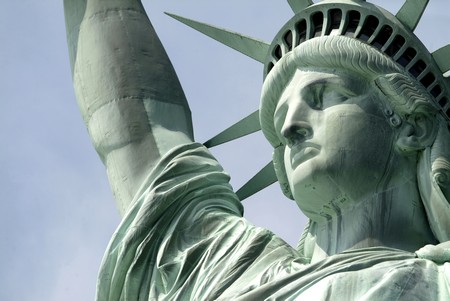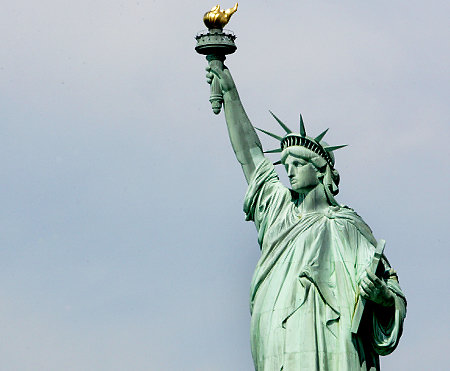The statue of the Lady stands pale against the dark shadows of the New York skyline. She grips a torch with one hand while, with the other hand, she clutches a book close to her breast. Her face is perpetually etched with a serene expression of hope. She stands facing towards the Atlantic Ocean as if waiting for or looking out in anticipation of something across the waters. This statue of the pale Lady is the famous “Statue of Liberty,” a well-loved symbol of hope and peace that the French gave as a gift to the American people.
Why was the Lady created?
A formidable friendship between France and the Unites States had formed during the American Revolution when the French supported the Americans in their struggle to be free from British rule. From this historical event, the French developed an admiration for America’s success with establishing a democratic government.

One hundred years later, this deep admiration became a topic for a small group of French intellectuals at a dinner party. This group was comprised of individuals opposed to the oppressive regime of Napoleon III, while the party was hosted by Edouard Rene Lefebvre de Laboulaye, a well-known scholar, jurist, abolitionist, and leader of “liberals” dedicated to the establishment of a French republican government.
During the evening, the talk focused on the close ties between the nations of France and America. There was admiration and sympathy in the voices of the guests. Laboulaye observed a “genuine flow of sympathy” between France and American, and called them, “the two sisters.” Looking forward to the celebration of America’s independence 11 years later, Laboulaye thought it would be wonderful to present the United States a lasting memorial to its independence.

Who thought of creating the Lady?
Laboulaye’s idea struck a responsive chord in one of his guests, Frederic-Auguste Bartholdi, a successful, 31-year-old sculptor from Colmar, a town in the eastern province of Alsace, France. The thought of giving a gift to the Americans deeply interested the sculptor that he was moved to create the masterpiece.
Success in grand projects, in addition to personal fascination with large-sized works of art, encouraged Bartholdi to create the Statue of Liberty’s colossal size. At the young age of eighteen, he received his first commission for creating the first public monument, which was a 12-foot statue of General Jean Rapp. The statue earned Bartholdi a reputation, which led to numerous similar, oversized, patriotic commissions later. A trip to Egypt later shifted Bartholdi’s attention from grand to colossal works of art.
The Neoclassical artistic style of the nineteenth century primarily influenced the appearance of the Statue of Liberty. Bartholdi patterned her after the goddess of freedom, Libertas. He could have chosen any other Roman god or goddess, but a personification of freedom was whom he had chosen because of his deep appreciation for it. He learned the true meaning of “liberty” from his experience in the Franco-Prussian war.
Meanwhile, partially as propaganda to advance the cause of those who were seeking the creation of a French Republic, Laboulaye suggested that Bartholdi should travel to America. Armed with letters of introduction from Laboulaye to some of America’s most influential men, Bartholdi sailed to New York in 1871.

Who constructed the Lady?
In time, Bartholdi became successful and work on the project promptly began. The architect for the 89-foot-high pedestal was Richard Morris Hunt. Alexandre-Gustave Eiffel of the famed Eiffel Tower was the statue’s engineer for its intricate skeleton. General Charles P. Stone was in charge of the construction of the whole project, including the foundation, the pedestal, and the reassembly of the statue in New York. In France, Gaget, Gauthier and Company served as the foundry for the sculpture.
Facts about the Statue of Liberty
- It was the first statue that visitors can climb inside. For 50 cents, a visitor could climb a steel ladder to the balcony around the torch.
- Its head was made of copper.
- Liberty’s foundation alone required 24,000 tons of concrete, the largest single mass ever poured at that time.
- It measures 52 feet, 10 inches in height. At the bottom, it is 91 feet, and at the top, it is 65 feet. The pedestal rises 89 feet above the foundation.
- President Calvin Coolidge declared the Statue of Liberty to be a national monument on October 15, 1924.
- In 1933, the National Park Service took over its administration and maintenance.